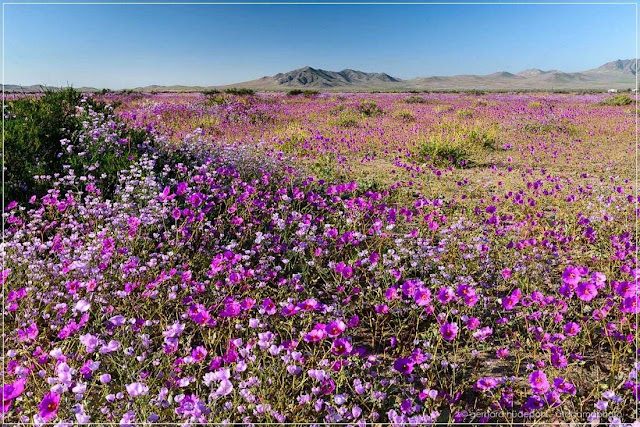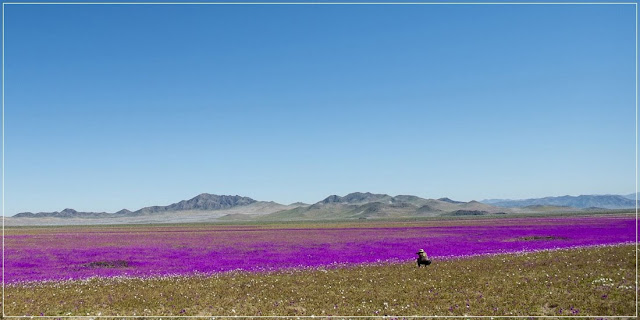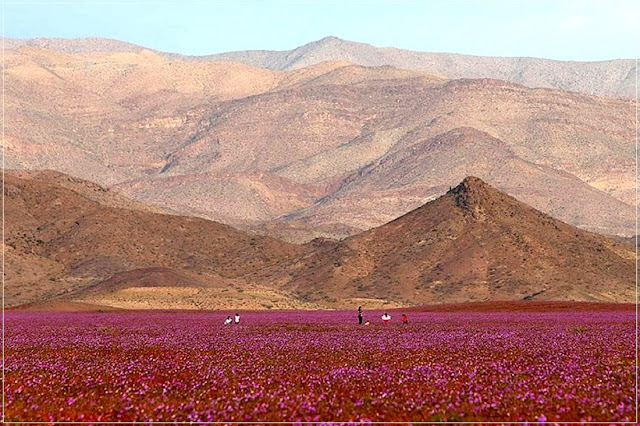Nature amazes us all. One of the most amazing natural wonders is Chile's the Atacama Desert. It is considered to be the driest and highest desert on Earth. The region might not see rain for many years. Temperatures range from 0°C at night to 40°C during the day. The driest desert of all is where miracles can be performed. The El Nino phenomenon caused an increase in winter rains, which led to a surprising outcome: the desert burst into bloom with a bounty of color and flowers. The desert was covered in wildflowers, with thousands to even millions of wildflowers.
 |
| Desert Bloom |
Desert Blooms
The flowering desert is a local term for this periodic phenomenon that occurs in the Atacama desert. This occurs between Chile and Peru every five to seven years. However, it has occurred twice in the last four years. This rare phenomenon is where thousands of flowers bloom in September and November when winter rains are more intense than what was expected for the desert. A certain level is capable of causing many bulbs and seeds to germinate in spring, even though they may have been dormant for many years. The sand becomes brittle and colorful in spring.
This extraordinary flowering encourages the growth of insects as well as the appearance of many species of birds, lizards, and other wildlife. It covers an area of nearly 200 km from the south of Vallenar to the north of Copiapo in both coastal and interior areas. Climatically, this event is linked to El Nino (ENSO), a warming of the ocean currents that run along the coast. This causes an increase in precipitation. The spectacle of Atacama flowering was a sight to behold, with great anticipation and rains, unlike any other 20-years.
This year's flowering has been extraordinary not only because of the unusual period it occurs but also because it decreased the normal time period. There were two in less than 4 years, 2017 and 2015. It had not been possible before 1997, 20 years ago. There are about 200 species of flowers that make up flowering, some of which are endemic to this region and not found elsewhere in the world. Different flower species are more common on the coasts than inland, and they bloom sequentially from September to November.
First Image MARTIN BERNETTI via Getty Images / Source  |
| Atacama desert flowers |
Desert Blossom
Morning glories, terciopelos, doquilla (guanaco-paw), huilles and field sighs are some of the most common species. There are also many species of cacti that show their best during these months. There is also fauna such as butterflies, vaquitas (a beetle), and other flora. Many tourists from around the world travel to Chile's Atacama Desert each year to see this amazing spectacle. However, environmental protection groups have been concerned about the potential destruction of this natural heritage in recent years due to increased visitor numbers, illegally extracted cactus species, and the cutting of flowers.
The government is developing and implementing information campaigns and prohibitions, inspections, to allow the enjoyment of this spectacular natural spectacle and protect the environment from any potential damage. Tourists who travel to the dunes in 4x4 vehicles can cause severe damage to the plants and decrease the chance of regeneration.
 |
| Atacama desert flower |
 |
| Flower in a desert |
 |
| Desert bloom plant |
 |
| Atacama desert bloom |
 |
| Desert flowers |
 |
| Desert blossom |
 |
| Blooms in the desert |
 |
| Desert blooming |
 |
| Desert blooms |
 |
| Desert Bloom |













No comments:
Post a Comment